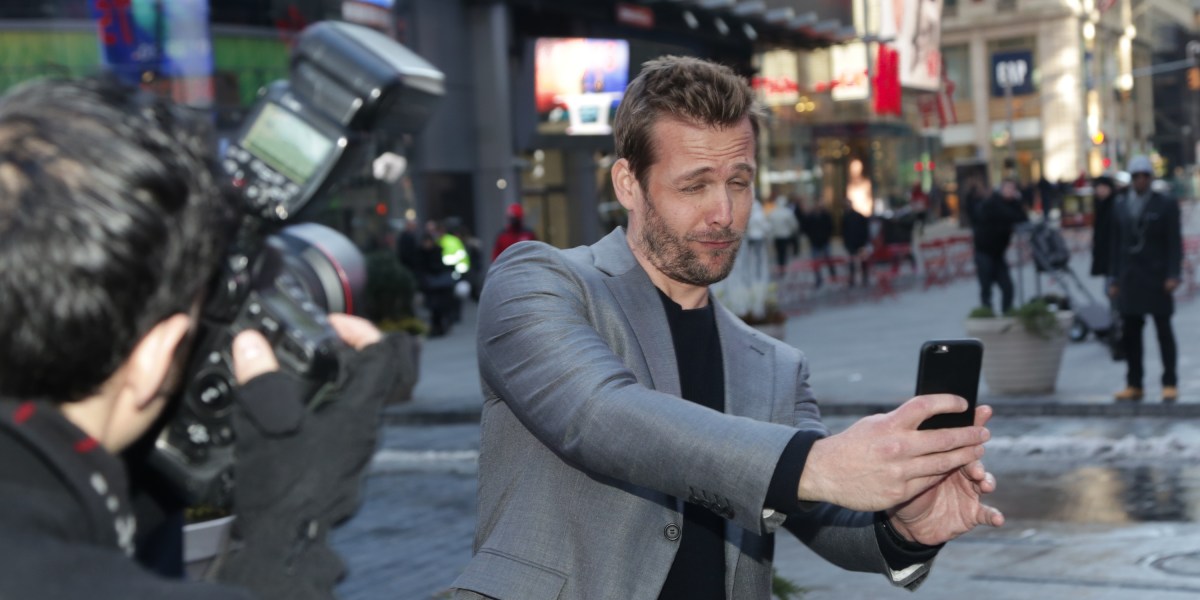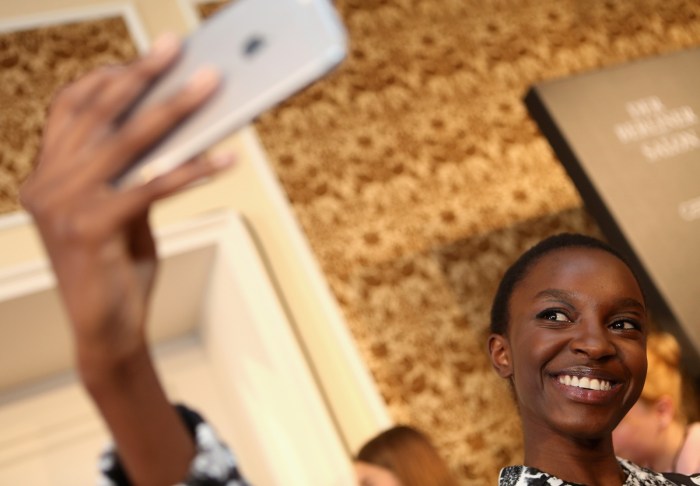The Technology Behind Selfie Verification
HSBC’s selfie verification system is a sophisticated technology that leverages advanced algorithms and machine learning to ensure secure and efficient customer onboarding. The system compares a customer’s live selfie with their uploaded identification document, verifying their identity in real-time. This process is powered by a combination of technologies, including facial recognition and liveness detection.
Facial Recognition
Facial recognition is a core technology in HSBC’s selfie verification system. It involves analyzing and comparing unique facial features from a selfie with those on an identification document. The system utilizes advanced algorithms to extract key facial features, such as the distance between the eyes, nose length, and jawline, and then compares these measurements against the document’s image. This comparison is performed with high accuracy, ensuring that the person in the selfie is the same as the one on the document.
Liveness Detection
To prevent fraud and spoofing, HSBC’s selfie verification system incorporates liveness detection technology. This technology ensures that the person taking the selfie is a real person and not a static image or a video replay. The system uses various techniques to assess liveness, such as analyzing subtle facial movements, blinking patterns, and the presence of unique physiological features. This technology adds an extra layer of security, preventing fraudsters from using fake images or videos to bypass the verification process.
Security Measures
HSBC prioritizes security and privacy in its selfie verification system. The system is designed to protect customer data and prevent unauthorized access. Several security measures are in place:
- Data Encryption: All data collected during the selfie verification process is encrypted using industry-standard encryption algorithms, ensuring its confidentiality and integrity.
- Secure Storage: Customer data is stored in secure data centers with robust access controls, preventing unauthorized access or breaches.
- Regular Security Audits: HSBC conducts regular security audits to identify and mitigate potential vulnerabilities in its selfie verification system, ensuring its ongoing security and reliability.
The User Experience of Selfie Verification
HSBC’s selfie verification process is designed to enhance security and streamline the onboarding experience for customers. This innovative approach leverages facial recognition technology to verify user identity, ensuring a secure and convenient experience.
User Testimonials
User feedback is crucial in understanding the effectiveness of any new technology. HSBC has received positive testimonials from customers who have utilized the selfie verification process. Many have praised the system’s ease of use and speed, highlighting how it simplifies the verification process compared to traditional methods.
“The selfie verification process was incredibly quick and easy. It took me less than a minute to complete, and I didn’t have to wait for any lengthy verification procedures. It’s a great way to make the onboarding process more efficient,” said one HSBC customer.
Ease of Use and Accessibility
HSBC’s selfie verification process is designed to be user-friendly and accessible to a wide range of individuals. The system is intuitive and requires minimal technical expertise.
The process is accessible to individuals with diverse technical abilities, and the user interface is designed to be clear and straightforward.
Step-by-Step Guide to Selfie Verification, Hsbc use selfies verification
Here’s a step-by-step guide to complete the selfie verification process with HSBC:
- Open the HSBC mobile app or website: Begin by accessing the HSBC platform through either the mobile app or the website.
- Navigate to the verification section: Locate the section dedicated to identity verification within the app or website.
- Initiate the selfie verification process: Click on the “Start Selfie Verification” button or a similar prompt.
- Follow the on-screen instructions: The system will guide you through the process with clear instructions.
- Position your face within the frame: Use your device’s camera to capture a clear selfie, ensuring your face is fully visible within the designated frame.
- Complete the verification process: Once the selfie is captured, the system will analyze it and compare it with your provided identification document.
- Receive confirmation: Upon successful verification, you will receive a confirmation message indicating that your identity has been verified.
Impact and Future of Selfie Verification
Selfie verification, a seemingly simple yet powerful technology, is poised to revolutionize the banking industry. It’s a technology that leverages the ubiquitous nature of smartphones and the power of facial recognition to enhance security and streamline customer interactions.
Impact on the Banking Industry
The impact of selfie verification on the banking industry is multifaceted. It promises to enhance security, improve customer experience, and drive operational efficiency.
- Enhanced Security: Selfie verification significantly reduces the risk of fraud and identity theft by verifying the identity of customers in real-time. This is particularly important for transactions involving sensitive financial data. For instance, a bank can use selfie verification to authenticate a customer’s identity before allowing them to access their account online or make a large transaction.
- Improved Customer Experience: Selfie verification streamlines the onboarding process for new customers and simplifies account access. This eliminates the need for physical documentation and in-person visits, making banking more convenient and accessible. For example, customers can open a new account or reset their password remotely, without having to visit a branch.
- Operational Efficiency: Selfie verification automates identity verification, reducing the workload on bank staff and freeing them up to focus on other tasks. This results in significant cost savings and improved operational efficiency. For example, banks can use selfie verification to automate the process of verifying customer identities for loan applications, reducing the processing time and freeing up staff to focus on other tasks.
Future Trends and Advancements
The future of selfie verification technology is bright, with advancements expected in areas like:
- Improved Accuracy: As facial recognition technology continues to evolve, selfie verification will become even more accurate and reliable, further reducing the risk of false positives and false negatives.
- Enhanced Security: Advancements in artificial intelligence and machine learning will enable selfie verification systems to detect and prevent spoofing attempts, such as using photos or videos to bypass the verification process.
- Integration with Other Technologies: Selfie verification will be integrated with other technologies, such as biometrics, to create a more comprehensive and secure authentication system. For example, a bank might require customers to complete a selfie verification and a fingerprint scan before granting access to their account.
Ethical Considerations and Potential Risks
While selfie verification offers significant benefits, it’s essential to consider the ethical implications and potential risks associated with this technology.
- Privacy Concerns: The use of facial recognition technology raises concerns about privacy, as it involves the collection and storage of sensitive biometric data. Banks must ensure that they collect and store this data securely and only use it for legitimate purposes.
- Bias and Discrimination: Facial recognition technology can be biased, leading to inaccurate results for certain demographics. Banks must ensure that their selfie verification systems are fair and unbiased to avoid discrimination against specific groups.
- Security Breaches: Despite advancements in security, there is always a risk of security breaches that could compromise the biometric data collected for selfie verification. Banks must implement robust security measures to protect this data from unauthorized access.
Comparison with Other Banks: Hsbc Use Selfies Verification
HSBC’s selfie verification system is a prime example of how financial institutions are embracing technology to enhance security and convenience for their customers. However, it’s essential to compare HSBC’s approach with those implemented by other major banks to understand the strengths and weaknesses of different methods and identify any unique features HSBC might offer.
Comparison of Selfie Verification Systems
The use of selfie verification systems has become increasingly common among major banks, with each institution implementing its own approach. Some key aspects to consider in comparing these systems include the technology employed, the user experience, and the level of security offered.
- Technology: While many banks utilize facial recognition technology for selfie verification, the specific algorithms and implementation can vary. Some banks may rely on 2D facial recognition, while others utilize more advanced 3D models. The choice of technology impacts the accuracy and robustness of the system.
- User Experience: The user interface and the ease of use are crucial for a seamless customer experience. Banks strive to make the selfie verification process intuitive and efficient, minimizing the time required for verification.
- Security: Security is paramount in any financial transaction. Banks employ various security measures, such as liveness detection and fraud prevention mechanisms, to ensure that the selfie verification process is secure and resistant to spoofing attempts.
Strengths and Weaknesses of Different Approaches
Different banks have adopted varying approaches to selfie verification, each with its own strengths and weaknesses.
- Traditional Banks: Traditional banks often rely on established security measures and may be slower to adopt new technologies. Their selfie verification systems might be less sophisticated compared to those implemented by newer fintech companies.
- Fintech Companies: Fintech companies are known for their innovative approach to financial services. Their selfie verification systems often leverage advanced technologies like AI and machine learning, offering a more user-friendly and secure experience.
Unique Features of HSBC’s Selfie Verification System
HSBC’s selfie verification system stands out due to its focus on user experience and security. The system leverages advanced facial recognition technology and incorporates liveness detection to prevent spoofing attempts. The intuitive user interface guides customers through the process seamlessly.
- Advanced Facial Recognition Technology: HSBC utilizes advanced facial recognition algorithms to accurately identify customers. This technology can distinguish between real individuals and photos or videos, enhancing security.
- Liveness Detection: To prevent spoofing, HSBC’s system incorporates liveness detection, which verifies that a live person is present during the verification process. This feature helps to ensure the authenticity of the selfie and enhances security.
- User-Friendly Interface: HSBC’s selfie verification system is designed with user experience in mind. The intuitive interface guides customers through the process step-by-step, making it easy for users of all technical backgrounds.
Hsbc use selfies verification – HSBC’s implementation of selfie verification is a testament to the evolving landscape of digital security in the banking sector. By adopting this technology, HSBC not only enhances customer experience but also strengthens its security measures. While ethical considerations and potential risks remain, the future of selfie verification in banking looks promising, paving the way for a more secure and accessible financial ecosystem.
Remember those days when HSBC made you take a selfie to verify your identity? Yeah, that’s pretty much the norm these days, but it seems like tech giants are taking things a step further. Facebook Messenger is now offering a Snapchat-like live video feature , allowing you to chat face-to-face with your friends. Maybe soon we’ll be using our entire faces to unlock our bank accounts, who knows!
 Standi Techno News
Standi Techno News

